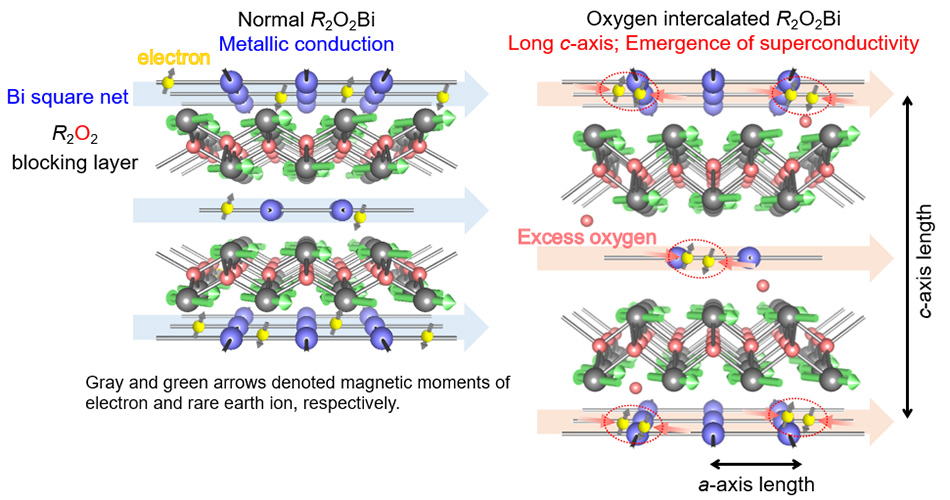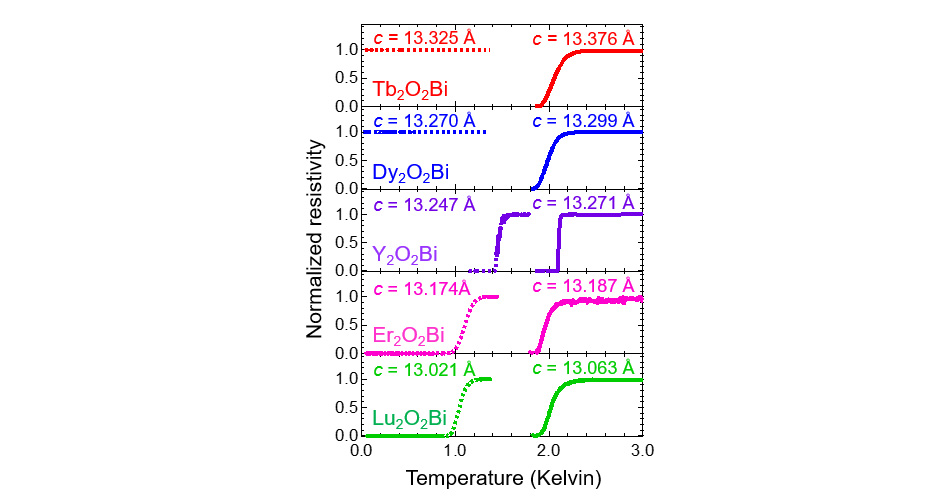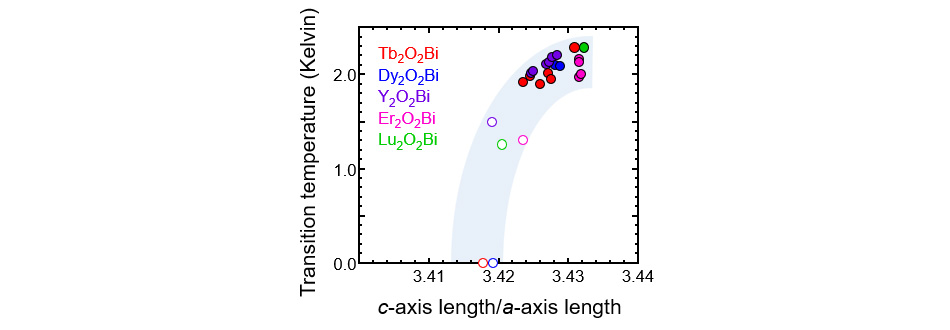R2O2Bi (R: rare earth elements) is a layered compound composed of conducting Bi square nets and insulating R2O2 blocking layers (Fig. 1). By oxygen intercalation, the crystal structure is elongated along the c-axis, resulting in emergence of superconductivity at about 2 K (Fig. 2), although its mechanism is unclear at present. Intriguingly, the superconducting transition temperature is scaled by c-axis length normalized by a-axis length for each R2O2Bi, i.e. tetragonality, irrespective of the type of R in R2O2Bi (Fig. 3). Recently, La2O2Bi is found to show high hole carrier mobility via oxygen intercalation in spite of absence of superconductivity. In addition, La2O2Sb epitaxial thin film, realized for the first time, is found to show ten-thousand-fold higher electrical conduction than La2O2Sb polycrystal in previous study.

Fig. 1 Crystal structure of R2O2Bi. The c-axis length increases via oxygen intercalation.

Fig. 2 Temperature dependence of resistivity for each R2O2Bi. Dashed and solid lines denote normal R2O2Bi and oxygen intercalated R2O2Bi, respectively.

Fig. 3 Superconducting transition temperature vs. c-axis length/a-axis length for each R2O2Bi. Open and solid symbols denote normal R2O2Bi and oxygen intercalated R2O2Bi, respectively.
